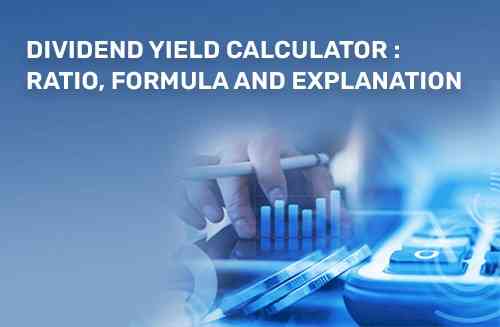What Is The Dividend Yield Ratio And How To Calculate It?
Investing in stocks is one of the crucial decisions to be made along your financial journey. Before you invest in any stock, ensure to review the company’s profits, cashflows, balance sheet, financial ratios, industry trends, and management team before investing. Thoroughly evaluating these factors is important to create a planned investment strategy.

Investing in stocks is one of the crucial decisions to be made along your financial journey. Before you invest in any stock, ensure to review the company’s profits, cashflows, balance sheet, financial ratios, industry trends, and management team before investing. Thoroughly evaluating these factors is important to create a planned investment strategy.
Various financial ratios provide insight into the company’s financial performance, stability, and potential for development. They can also provide helpful information to prospective investors about a company’s liquidity, profitability, efficiency, and solvency, allowing them to make more educated investment decisions.
The Dividend Yield ratio is one of many financial ratios that play a crucial role in financial analysis. Understanding the dividend yield ratio and the dividend yield ratio formula allows one to make informed decisions about which shares to buy for long term growth.
What is Dividend Yield Ratio?
When a company makes a profit, it can distribute a portion of that profit to shareholders as a dividend. Thus, dividends are a payout of profits by an enterprise to its shareholders/investors. Any profit that is not distributed is reinvested in the company for its growth.
As the name suggests, the dividend yield ratio is a financial metric that calculates the total cash dividends given to investors/shareholders in comparison to the share’s market price. A high dividend yield means the company distributes a significant portion of its income as dividends. Companies’ dividend yield must always be compared to the industry’s average to get a better picture of the company.
How to Use the Dividend Yield Ratio
Generally, one must seek companies with dividend yields outperforming their competitors. This is significant since it indicates that these companies deliver higher dividends.
To receive dividends on stocks, it is essential to open a Demat account to start investing.
Formula for the Dividend Yield Ratio
The dividend yield ratio formula is:
Dividend Yield Ratio = (Annual Dividend Per Share/Current Market Price of the Share) *100
Hence, the dividend yield ratio is simply calculated by dividing the annual dividends paid per share by the stock’s market price at the end of the measurement period.
How to Compute Dividend Yield Ratio?
For instance, XYZ company pays Rs. 5 per share dividends to its shareholders in the current fiscal year. At the end of the fiscal year, the market price of its stock is Rs. 100. Its dividend yield ratio is:
= 5/100 = 5%
Interpretation
Dividends are critical for investors seeking passive income from their investments. Dividends are also a symbol of stability because only profitable businesses can pay them. Furthermore, a corporation that pays dividends regularly is deemed mature since it demonstrates liquidity control.
The dividend yield ratio expresses the amount of income a shareholder can expect from a company in the form of dividends. A higher dividend yield ratio suggests a higher return on investment for stockholders since they get a share of the company’s earnings as dividends as well as the possibility of capital appreciation in the shares. On the other hand, another perspective suggests that a high dividend yield ratio may signal that the firm is not reinvesting its earnings for future development and may not be a smart long-term investment.
When examining a stock’s dividend yield ratio, other financial indicators and considerations, such as the company’s overall financial health and profits growth potential, must be considered.
Pros and Cons of Dividend Yield
A few of the pros of dividend yield are:
● Dividend yield offers investors a consistent source of income, which may be especially appealing to individuals looking to supplement their regular income.
● Dividend-paying companies are often financially secure and have a track record of continuous profitability.
● Dividend-paying companies can help diversify an investment portfolio.
A few of the cons of dividend yield are:
● A company’s capacity to pay dividends is determined by its earnings and financial stability. Therefore, a decline in the company’s financial performance may result in a dividend decrease or elimination.
● Investors seeking capital appreciation in short term may be less interested in dividend-paying companies, which usually have lesser volatility.
Conclusion
The dividend yield ratio is a great financial tool that demonstrates how much income a shareholder/investor may expect from a stock in the form of cash dividends. While a high dividend yield can provide a consistent source of income and reflect a company’s positive financial performance, it is crucial to weigh both the benefits and drawbacks of dividend yield before making an investing decision.
When weighing the possible benefits and risks of investing in a stock with a high dividend yield, consider a company’s general financial health, profits, and growth prospects.
Investments in securities market are subject to market risk, read all the related documents carefully before investing.


 City Air News
City Air News 










